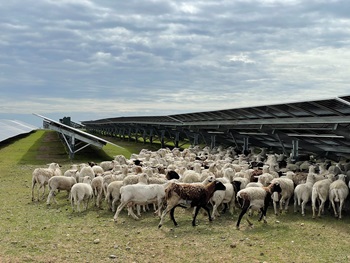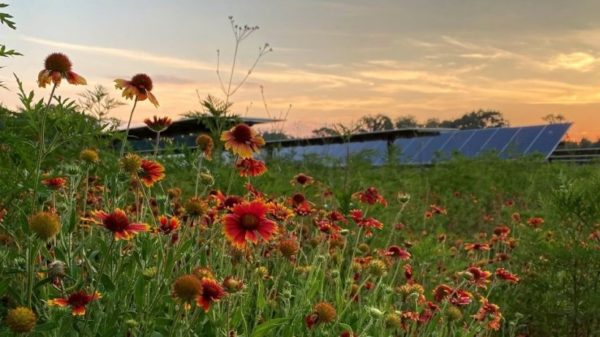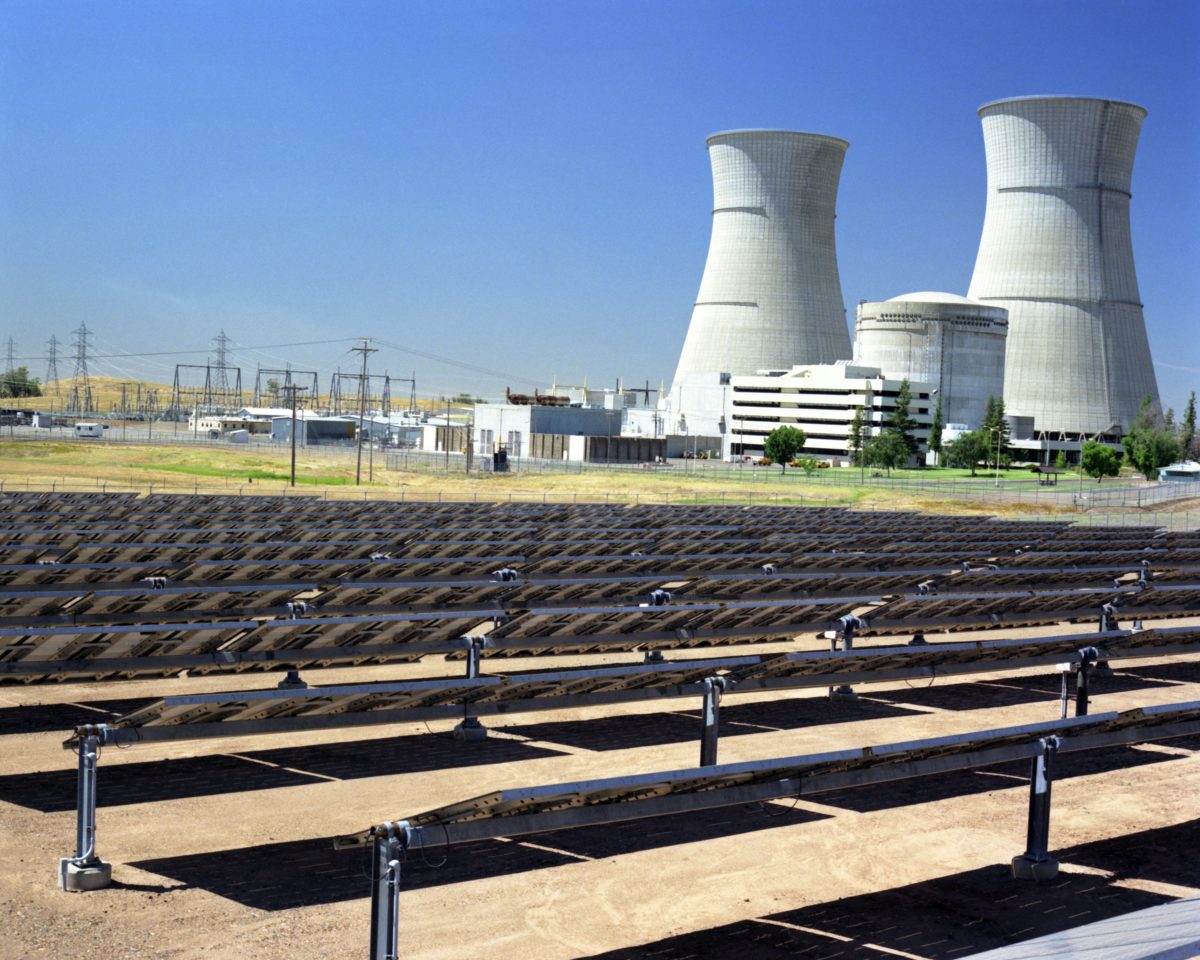The Electric Power Research Institute (EPRI) and the Sacramento Municipal Utility District (SMUD) launched a project aimed at restoring prairie lands and pollinator habitat under solar arrays along a 20-acre plot of land in Sacramento County, Calif.
The Rancho Seco energy project is located at the site of a decommissioned nuclear power plant in central California and part of native tribes’ ancestral lands. The project also supports SMUD’s 2030 Zero Carbon Plan. The project is set to run for four years in multiple phases.
Project participants include the University of California, Davis, D.E. Shaw Renewable Investments, NovaSource Power and the Xerces Society for Invertebrate Conservation.
The project team will create a pollinator habitat under a 160 MW utility-scale solar project and measure changes in energy, soil carbon and management costs at the site. Expected outcomes include the establishment of native plant species promoting pollinator habitats and soil carbon monitoring.

Image: SMUD
The 160 MW Rancho Seco Solar II project was installed in February 2021 and is operated by D.E. Shaw Renewable Investments, under a 30-year power purchase agreement with SMUD.
The property is also home to Cosumnes Power Plant, an operating combined-cycle gas turbine (CCGT) power plant, nature preserve and recreation area, which is home to the federally protected California Tiger Salamander.
“Successful demonstration could provide the blueprint for future renewable energy projects throughout the country that are restorative not just in their kilowatts, but also for local people and biodiversity,” said Jessica Fox, senior technical executive and conservation biologist at EPRI.
“We’re trying to create a model that other solar developers can follow,” said Rebecca Hernandez, a UC Davis associate professor and director of the Wild Energy Center. “This is an opportunity to stack California prairie with solar energy and begin to restore the 98% of prairie habitat that’s been lost.”
SMUD is part of EPRI’s Power-In-Pollinators initiative. Launched in 2018, the initiative is the largest collaboration of power companies in North America working to understand pollinators.
“We are excited for this project to consider multiple levels of energy including solar power, the energy needs of the biological ecosystem, and the restoration of cultural energy for our communities,” said Kathleen Ave, SMUD’s senior climate and ecosystem strategist and co-chair of the Power-In-Pollinators initiative.

Image: Jill Stuckey, Department of Energy
Agrivoltaics R&D
According to the Department of Energy’s Solar Energy Technologies Office (SETO), pollinators such as bees, butterflies and other insects are critical to supporting about 35% of the world’s food crop production. Establishing pollinator-friendly plants under and around ground-mounted solar arrays has the potential to provide this critical habitat and benefit both the pollinators and nearby agriculture.
SETO is working to better understand the economic, ecological, and performance impacts of co-locating pollinator habitat and solar arrays. Its research will enable more solar deployment to help meet the Biden Administration’s goal of 100% carbon-free electricity by 2035. The DOE notes that providing 1 terawatt of solar power requires 5.7 million acres of land, which is 0.3% of the total U.S. contiguous land area. The agency stressed the importance of maximizing local environment and agricultural communities for the co-hosting of solar projects.
Argonne National Laboratory and the National Renewable Energy Laboratory noted that approximately 1,350 square miles of farmland in the United States sits in close proximity to current or planned utility-scale solar projects that could benefit from pollinator habitat agrivoltaics programs.
Other projects similar to SMUD’s Rancho Seco property include a a pollinator-friendly solar farm on former President Jimmy Carter’s land in Georgia. This site is one of five solar sites used to study stormwater infiltration and runoff at solar farms. SETO is testing three different seed mixes, including the industry-standard grass, a low-diversity pollinator mix, and a high-diversity planting pollinator mix.
In the Midwest, SETO funded a project led by the University of Illinois to investigate solar co-located with pollinator plantings at large-scale installations, with teams of researchers working at seven separate sites in the Midwest.
This content is protected by copyright and may not be reused. If you want to cooperate with us and would like to reuse some of our content, please contact: editors@pv-magazine.com.









I have been interested in agrivoltaics for several years and am encouraged by the increasing focus on it. I have acreage close-in to Tucson, Arizona where I would like to see agrivoltaic research and educational demonstrations for nearby schools conducted. The 3-4 acre site has reclamed water available.
I have reached out to University of Arizona reseachers concerning this idea receiving limited responses.
Does anyone out there have ideas or entities which might have an interest?